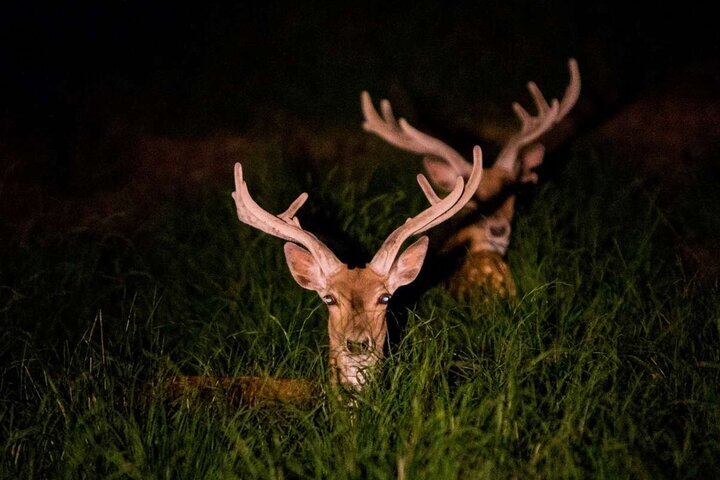Law on protection, sustainable exploitation of wildlife

TEHRAN – Considering that 55 years have passed since the adoption of the hunting and fishing law in the country, the Department of Environment drafted a law on the protection and sustainable exploitation of wildlife.
The hunting and fishing law approved in 1967 forms the legal basis for the protection of wildlife and the natural environment in Iran. Although many of the provisions of this law were progressive and innovative at the time of its approval, after several decades, due to the changes and developments in the environmental, social, economic, and cultural structure of Iran, it needs to be revised and updated.
The law focuses on important and fundamental principles such as the protection of habitats and biological resources.Widespread destruction of natural habitats, the rampant increase in hunting weapons, population increase, climate change, significant decrease in the population of wildlife species and the increasing threat of extinction, the development of illegal trade of wildlife species, and the entrance of invasive species to natural habitats are the main threats to the country's nature in recent years, which requires clear and firm laws to deal with.
The law of hunting and fishing is mostly based on setting the rules and systems of exploitation of wildlife and explaining the crimes and determining the punishments for illegal hunting and fishing, but with the wide changes of environmental approaches in the world, today the management of biodiversity is the focus and axis of the environmental laws.
The law was approved in a situation where the prevailing view of conservation in the world was a state-oriented view, and the provisions of this law were compiled almost based on the government's power and resources, but in the past few decades, many governments, considering the limitations of financial and human resources for the development of conservation and management measures, according to the recommendations of international environmental organizations including IUCN and the Convention on Biological Diversity (CBD), used non-governmental capacities such as indigenous and local communities, NGOs and the private sector.
However, it is unfortunately neglected in our national laws, despite all the problems that the DOE has faced in recent years to provide the budget and manpower needed to protect the country's biodiversity.
Accordingly, last year, the DOE decided to use national and international experiences, while determining the legal gaps in the hunting and fishing law, to draft a new comprehensive and efficient law.
The new law on the protection and sustainable exploitation of wildlife focuses on important and fundamental principles such as the protection of the habitat and wildlife and biological resources, the use of public participation and non-governmental capacities, the regulation of basic wildlife exploitation rules, reforming and revising crimes related to the natural environment and related punishments with the aim of increasing deterrence, defining legal requirements and mechanisms for other administrative and executive bodies whose programs and actions affect nature and wildlife.
Optimum implementation of national obligations towards international treaties related to wildlife, preservation of genetic reserves, attention to environmental economics and economic capacities resulting from the components of biological diversity, and determining legal mechanisms to direct these resources towards protective measures in the natural environment, using the capacities of native and local communities and those interested in environmental cooperation in the protection of habitats and wildlife, organizing trade of species, dealing with invasive species have also been considered as the main articles of the law.
Persian species in danger
Iran has a high diversity of species due to geographical conditions, climatic diversity, huge water resources of the Caspian Sea in the north and the Persian Gulf, and the Sea of Oman in the south.
According to the latest studies, about 1,300 species of vertebrates, including mammals, birds, reptiles, amphibians, and aquatic fish, about 30,000 species of invertebrates, and 8,000 species of plants have been identified in the country.
Unfortunately, over the past two decades, human activities have led to the alarming degradation of ecosystems, and the deletion of genes, species, and biological capabilities; Human threats to biodiversity have accelerated the most over the past 50 years over the entire history of human life.
Out of 1,300 species of animals in the country, 130 of which are endangered and threatened, Hassan Akbari, deputy head of natural environment and biodiversity of the Department of Environment, said in December 2021.
Ways to prevent poaching, habitat destruction
Kheirollah Moradi, head of the department of environment in Kordestan province, said that by implementing long-term training programs, people's misconceptions about wildlife must be changed in order to take effective measures to preserve the biodiversity and wildlife.
Habitats and wildlife in most parts of the world are in poor condition, and regarding the country's habitats and wildlife, we must boldly say that a large population of different wildlife species are declining and even endangered, he further lamented.
Reducing the number of animal species will reduce their genetic diversity, and this will greatly reduce the wildlife's resistance to diseases, natural and man-made phenomena, he highlighted.
The best way to reduce the threat to wildlife is to protect the natural habitats, which are the most important measures to continuously educate local communities and improve the economic situation of locals by generating alternative income to prevent poaching and habitat destruction, he suggested.
FB/MG
